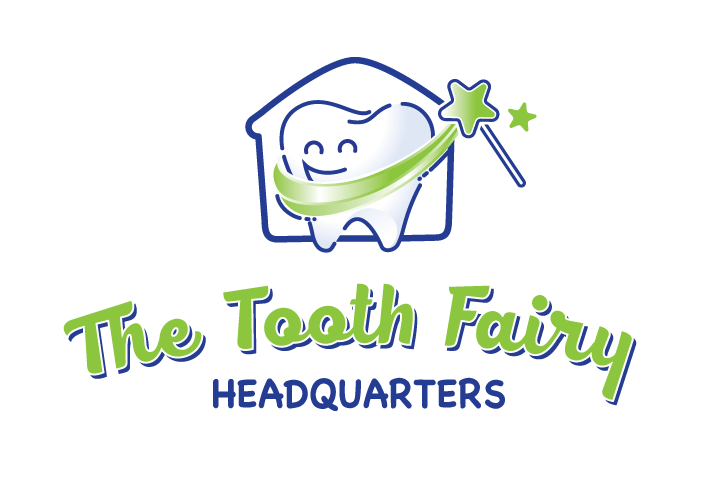Comprehensive Dental Care
Comprehensive dental exams including providing you, the parents, important information to keep your child’s teeth healthy and strong.
THE EXAM
During your child’s exam, the dentist will thoroughly examine your child’s teeth and gums for signs of tooth decay, gum disease, and other health problems. The dentist may also wants to take X-rays to see what is happening beneath the surface of the teeth and gums. Whether these X-rays are traditional or digital, the images provided will help the dentist discover dental issues not visible to the naked eye.
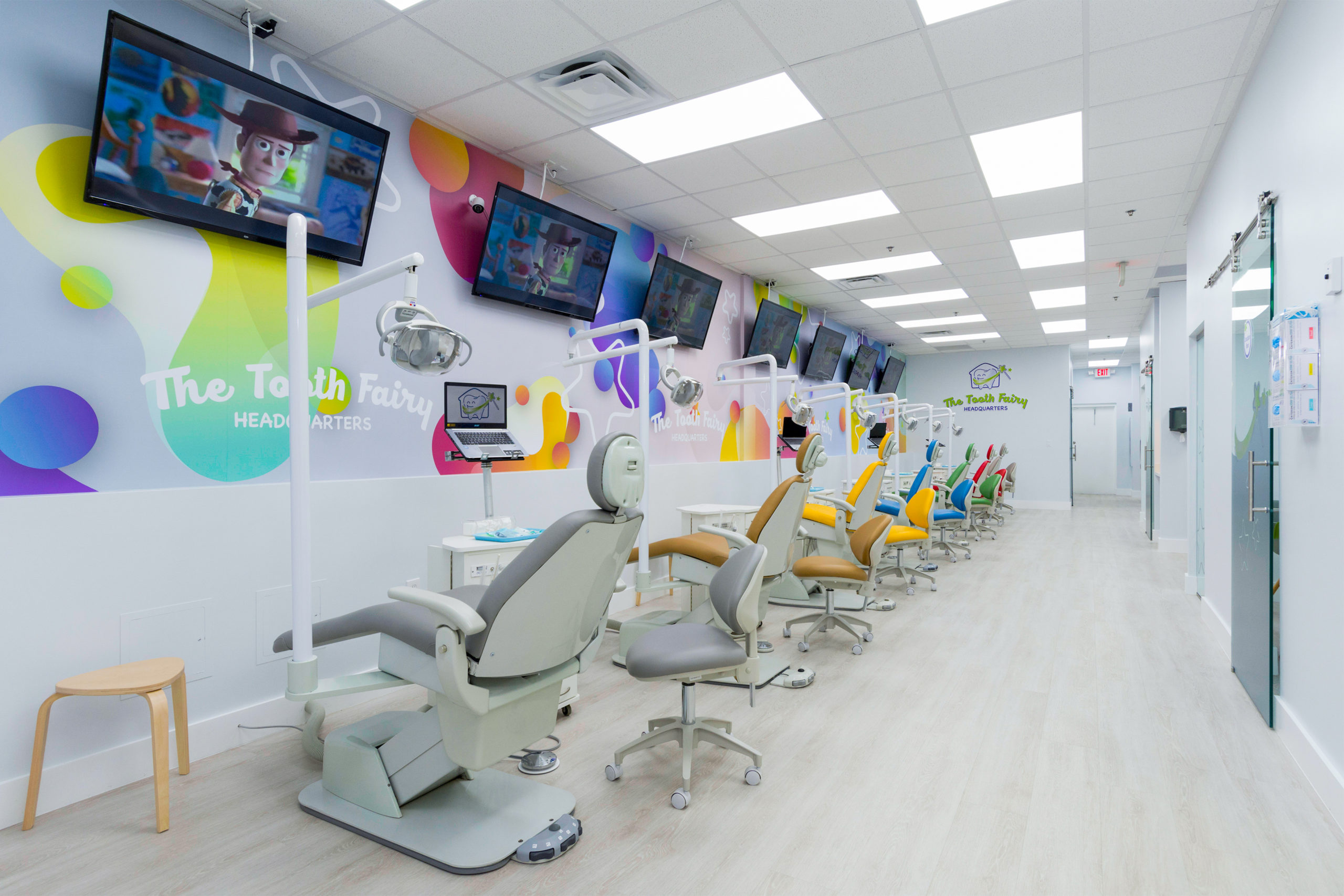
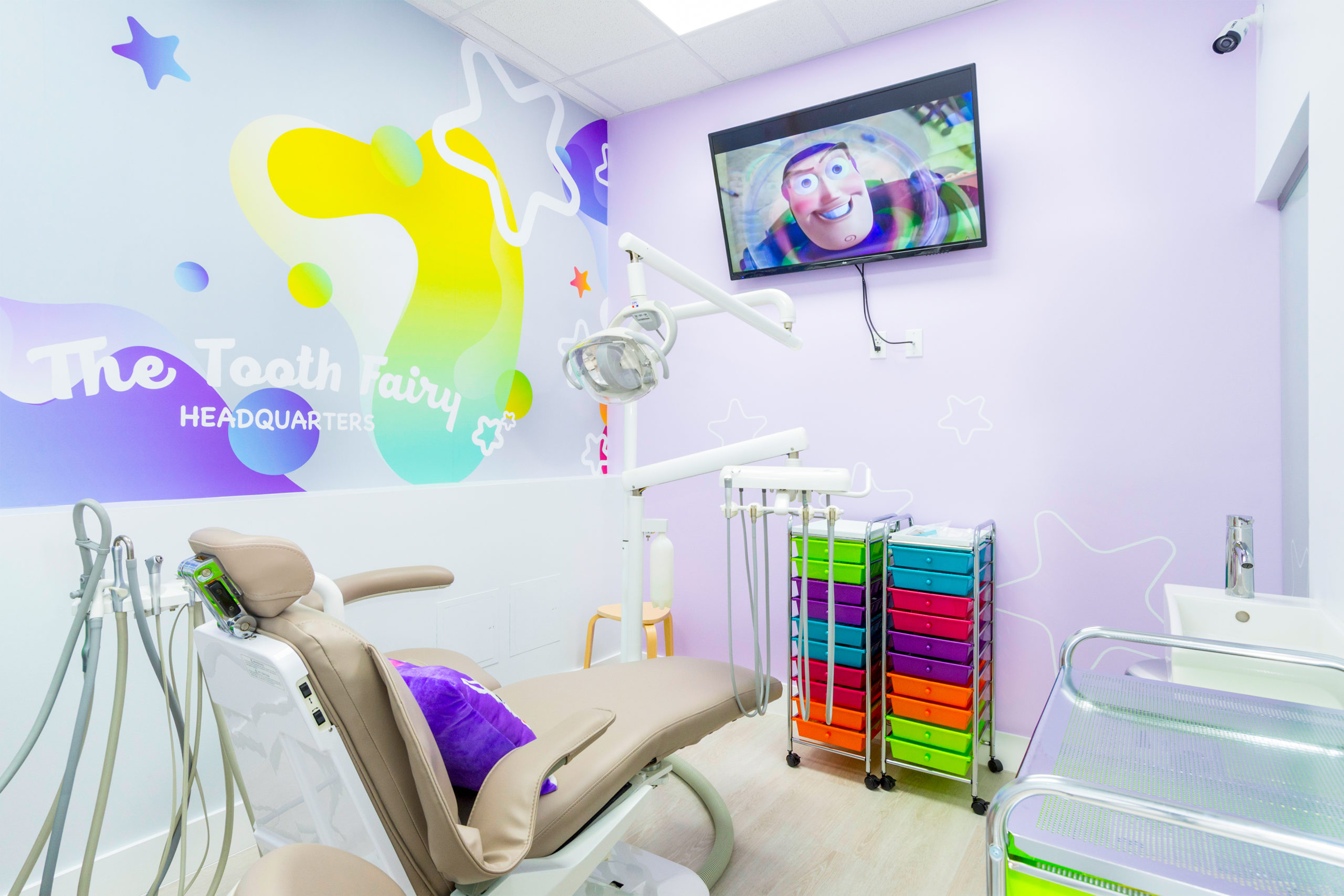
THE TYPICAL FIRST DENTAL APPOINTMENT
Include one or more of the following:
- A gentle but thorough examination of the teeth, jaw, bite, gums, and oral tissues to monitor growth and development and observe any problem areas such as thumb-sucking.
- A gentle cleaning, which includes polishing teeth and removing any plaque, tartar build-up and stains.
- X-rays as needed
- A demonstration of proper dental hygiene and oral health instruction.
- Topical fluoride.
Preventive dental care is important throughout life, especially at a young age
By practicing good oral hygiene at home and scheduling regular checkups with the dentist, your child can help keep her smile bright and healthy for many years to come.
At The Tooth Fairy HQ we use:
Dental X-rays detect much more than cavities. They may be taken to survey erupting teeth, diagnose bone disease, evaluate the results of an injury, or plan orthodontic treatment. X-rays allow dentists to diagnose and treat conditions that cannot be detected during a clinical examination.
In general, children need X-rays more often than adults. Their mouths grow and change rapidly. Their teeth are more susceptible to tooth decay than adults. For high caries risk patients, the American Academy of Pediatric Dentistry recommends X-rays every six months to one year. Children with a low risk of tooth decay may require X-rays less frequently.
How safe are Dental X-rays?
Pediatric dentists are particularly careful to minimize the exposure of child patients to radiation. With contemporary safeguards, like lead aprons, high speed film, digital X-rays, and thyroid collars, the amount of radiation received in a dental X-ray is extremely low. In fact, X-rays represent a far smaller risk than undetected and untreated dental problems.
Will X-rays be taken routinely?
X-rays are recommended only when necessary to evaluate and monitor your child’s oral health. The frequency of X-rays is prescribed by your pediatric dentist and based on your child’s individual needs. We follow the American Academy of Pediatric Dentistry’s guidelines based on your child’s caries risk assessment when taking cavity detecting X-rays at your child’s hygiene appointment.
Tooth enamel is the outer protective layer of each tooth.
Dentists provide professional fluoride treatments in the form of a highly concentrated rinse, foam, gel or varnish. The treatment may be applied with a swab, brush, tray, or mouthwash.
These treatments have much more fluoride than what’s in your water or toothpaste. They only take a few minutes to apply and your child may be asked to avoid eating or drinking for one hour after the treatment so the fluoride can fully absorb.
Always give your child’ s dentist his/her full health history so the dentist can choose the right treatment for your child.
Fluoride is a natural mineral that can strengthen tooth enamel that builds strong teeth and prevents cavities and it’s been an essential oral health treatment for decades.
Fluoride treatments can best help prevent decay when a child is also brushing using the right amount of toothpaste with fluoride, flossing regularly, getting regular dental care, and eating a healthy diet.
Fluoride is safe and used by dentists all over the world to help prevent tooth decay in children.
Fluoride supports healthy tooth enamel and fights the bacteria that harm teeth and gums. It can help prevent tooth decay, slow it down, or stop it from getting worse. Keep in mind that fluoride treatments cannot completely prevent cavities.
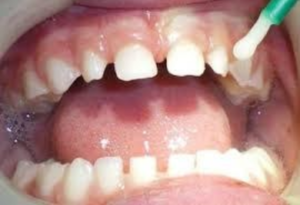
Dental sealants are thin, plastic, protective coatings a dentist places on the chewing surfaces of your child’s molars (back teeth). They fill the deep grooves that are hard for children to properly clean by brushing. These grooves are where harmful bacteria like to hide and cavities are most common. The protective layer added by dental sealants helps prevent up to 80% of cavities.
BPA, or Bisphenol A, is a common chemical found in many plastic products. Dental sealants are plastic and contain extremely low levels of BPA. According to the American Dental Association, we’re exposed to 100x more BPA by simply breathing than what’s contained in dental sealants.
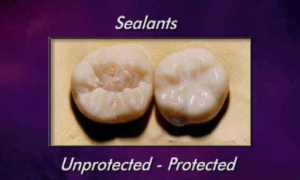
Preventing Problems Before They Start
The health of your child’s teeth and mouth is very important to the well-being of his or her entire body, and while routine brushing and flossing at home is necessary to keep your child’s smile looking its best, visiting the dentist for a comprehensive exam and cleaning is essential. The American Dental Association recommends that your child visit the dentist every six months to ensure his or her teeth stay healthy and smile stays beautiful.
By routinely seeing the dentist for exams and cleanings, your child can:
- Prevent tooth decay, gum disease, and bad breath
- Avoid costly and extensive dental procedures
- Have white teeth by reducing staining from food and drinks
- Shorten the time spent in the dentist’s office
- Have a smile that will last a lifetime
